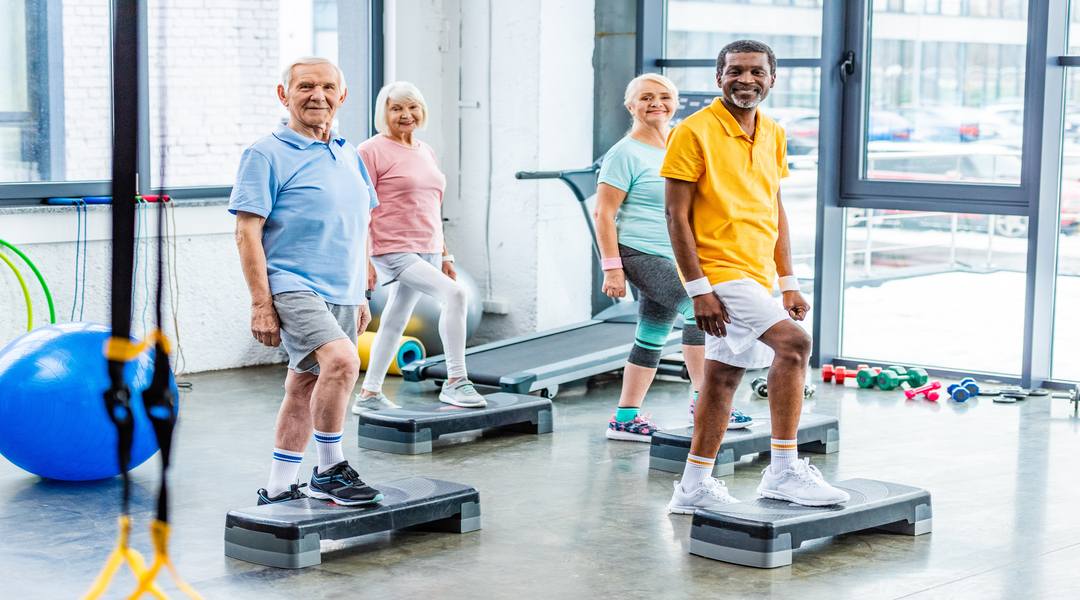Senior citizens often search for safe, effective ways to stay active. Do vibration plates fit the bill? The safety of these machines for seniors is something to consider. Boosting muscle strength and balance is easier than ever for older adults with these helpful machines. You’ll really see a difference. You’ll find everyday activities less of a struggle with increased blood flow and denser bones.
Safety is never guaranteed without proper guidelines, though; hence, understanding the right practices ensures seniors enjoy the rewards without unnecessary risks. Senior safety during vibration training: How do we make sure it’s safe?
Evaluating Safety for Senior Vibration Training
Ensuring safety is paramount when seniors consider vibration training. Research focuses on the transmission of vibrations from WBV devices through your body and how it correlates with established safety guidelines by ISO-2631. Tests reveal that knee flexion significantly reduces skull vibration, hinting at the position’s importance in mitigating risks.
Surprisingly, some devices exceed ISO thresholds for safe exposure levels dramatically, up to seven times, calling for strict adherence to usage instructions and caution during workouts. Prolonged or intense sessions could lead to adverse effects like back pain or circulatory issues, according to occupational health studies. To dig further into whole-body vibration adoption safely, see our insights on the advantages of using vibration.
Vibration Plate Benefits for Older Adults
Vibration plates, while beneficial for fitness, may raise some concerns about their effects on older adults. In this segment, we examine the positive aspects they bring to senior health and wellness.
- Enhanced proprioception is one benefit of careful vibration training. This refers to the body’s ability to sense its position and movement in space. For seniors with declining senses due to age or conditions like diabetes, controlled vibrations can improve balance.
- Another advantage includes better dexterity through stimulation from low-level vibrations. These assist in combating stiffness and maintaining hand function. However, it’s vital that these sessions stay within safe exposure limits per legal standards.
- Addressing back pain management presents another potential use case for vibration plates among an aging population often troubled by lower back issues stemming from sedentary lifestyles or past strenuous activity, yet acknowledging occupational studies linking long-term high-exposure vibration with increased risk requires strict adherence to safety protocols during use.
By considering the benefits alongside necessary precautions related to exposure limits recognized internationally, we provide a balanced perspective on integrating vibrational exercises into routines tailored for elder care that prioritize well-being above all else.
Precautions When Seniors Use Vibration Plates
Seniors should take specific precautions when using vibration plates to ensure safety and maximize benefits. Low-intensity platforms are ideal, as they operate at frequencies better suited for older adults, reducing risks like joint discomfort or dizziness.
Proper posture is key; standing with slightly bent knees and avoiding locked joints helps distribute vibrations safely through the body. Holding onto a support bar adds extra stability, especially for those with balance concerns.
Oscillating platforms should be avoided since they can cause uneven force distribution. Instead, vertical or side-alternating machines with programmable settings are safer options. Seniors should also follow the manufacturer’s guidelines on session duration and intensity to prevent strain or injury.
Those with conditions like osteoporosis, heart issues, or recent surgeries should consult a healthcare provider before use. With thoughtful adjustments and proper supervision, vibration plates can offer a low-impact exercise solution for older adults.
Integrating Vibration Plates Into Daily Routines
For seniors, building consistency is key when introducing any form of exercise. Incorporating vibration plate sessions into an existing daily routine makes the practice more sustainable over time and increases the likelihood of seeing long-term benefits without overwhelming the body.
Start small by scheduling short sessions (around 5 to 10 minutes a day) either in the morning or after a walk. Using the machine at a similar time daily helps establish habit formation, which is essential for seniors aiming to maintain regular physical activity. Pairing vibration exercises with stretching or light resistance bands can also enhance results by targeting multiple muscle groups and encouraging joint mobility.
It’s helpful to view the vibration plate as a complement to daily movement rather than a standalone fix. Some seniors enjoy combining it with seated leg lifts or balance drills, which can be safely performed with the support of a nearby chair. Others prefer using it post-walk to improve circulation and reduce stiffness. Over time, these consistent sessions may contribute to increased energy, improved flexibility, and a stronger sense of bodily awareness.
Caregivers or family members can support by helping track progress or even joining in to promote a sense of routine and shared wellness. With the right mindset and structure, vibration plate training can become a natural, enjoyable part of everyday life.
Tailoring Vibration Intensity for Age-Related Concerns
Before integrating vibration plates into a workout routine for seniors, personalizing the intensity is critical. Vibrations can revitalize dormant muscle fibers, bolstering strength and balance.
- Personalized Intensity: The goal is to awaken muscles without overwhelming them. Lower settings match an elderly personand#039;s capacity while minimizing the risk of injury or discomfort. Ensuring vibrations are gentle yet effective aids in gradual muscle fiber activation.
- Frequency Adjustment: Starting with 50 vibrations per second suits most senior users well. Over time, this encourages reflex responses and boosts circulation consistently across workouts. Precise frequency adjustments can optimize the engagement of nearly all muscle fibers safely.
- Age-specific Programming: Seniors need programs that prioritize safety alongside benefits like improved stability and stronger muscles. Researchers saw significant improvements in balance among seniors using vibration plates long-term. Programming should focus on low-impact exercises to maintain efficacy without strain on aging bones and joints.
Absolutely, vibration plates offer a safe exercise option for seniors. With adjustable speed settings and low-impact vibrations, these devices can cater to the fitness levels of older adults quite well. It’s essential, however, to start with guidance from a healthcare provider or trainer familiar with the individual’s health history.
Proper use can lead to improved balance, strengthened muscles without strain on joints, increased circulation, along with various other health benefits that Ridge And Company outlines in their exploration of whole-body vibration advantages for people across all ages.

